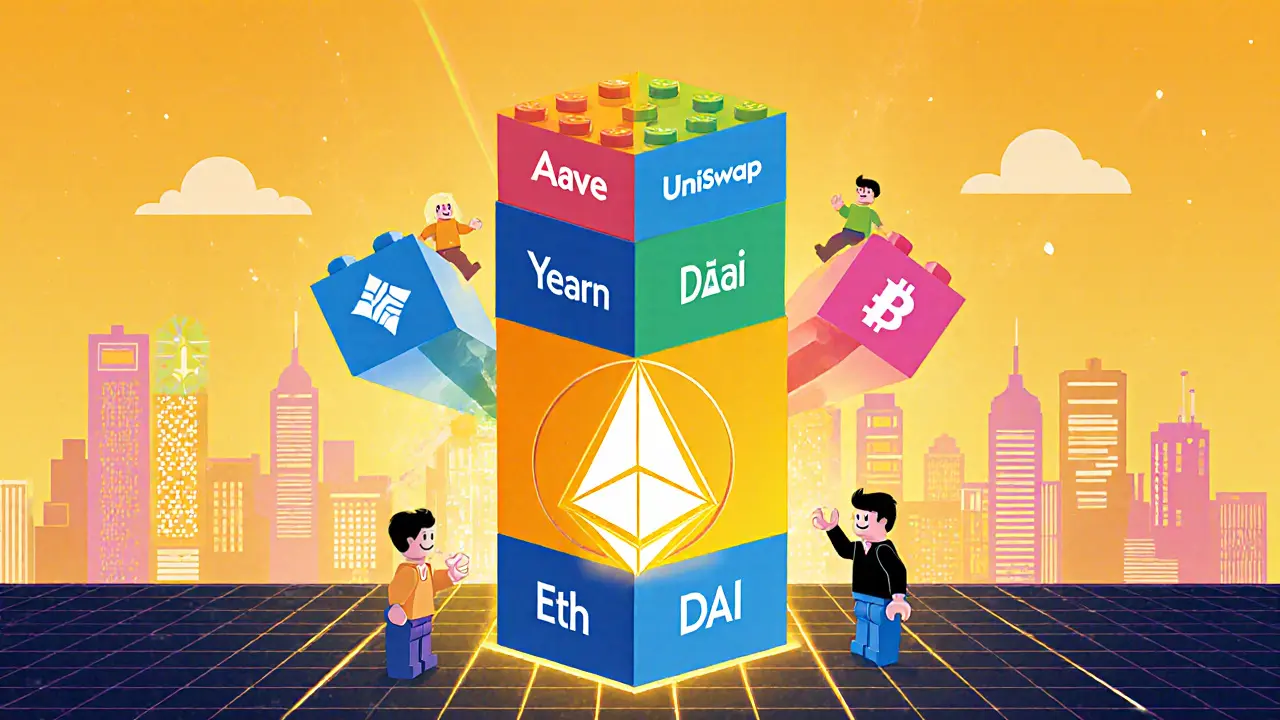DeFi Composability: How Blockchain Protocols Build on Each Other
When you hear DeFi composability, the ability for decentralized finance protocols to connect and interact like building blocks. Also known as blockchain interoperability, it means one smart contract can call another without permission—letting users swap tokens, lend assets, and earn yields across multiple platforms in a single transaction. This isn’t just tech jargon. It’s what lets you borrow USDC on Aave, use it as collateral on MakerDAO, then stake it on Curve—all without leaving your wallet.
That’s possible because of smart contracts, self-executing code on blockchains that run exactly as programmed. Unlike banks or apps that lock you in, DeFi protocols are open APIs. If a protocol follows the same rules (like ERC-20 or ERC-721), any other protocol can use it. That’s why Uniswap can trade tokens from Yearn, and Compound can accept collateral from Aave. It’s not magic—it’s code that’s designed to talk to other code.
But it’s not perfect. When one contract fails, it can drag others down. The 2022 Euler Finance hack showed how a single exploit in one lending pool wiped out $200 million across connected protocols. And not all chains play nice—Ethereum’s DeFi ecosystem thrives on composability, but many newer chains struggle to support it because their tools are too new or too isolated. That’s why you’ll see posts here about Wagmi (IOTA EVM) or HB DEX: they’re trying to offer DeFi services, but without deep integration, they’re stuck as isolated tools, not part of the bigger system.
Real DeFi composability means your money moves freely. It’s why people use wallets like MetaMask instead of exchange accounts—you keep control, and your assets can flow where they’re needed. But if a platform doesn’t connect to the main DeFi stack, it’s like having a key that only opens one door. That’s why posts here dig into exchanges like Uniswap v3 on Celo or wrapped asset custody: they’re testing how far composability can stretch across chains, currencies, and use cases.
Below, you’ll find real-world reviews of platforms trying to use DeFi composability—some succeed, some fail hard. Some are built to work with the ecosystem. Others? They’re just pretending. You’ll see which ones actually let your assets move, which ones trap them, and why the difference matters more than fees or flashy names.
How Composability Drives DeFi Innovation
Composability lets DeFi protocols connect like Lego blocks, enabling users to stack financial services on top of each other. This innovation drives faster development, higher yields, and unprecedented capital efficiency-but also introduces systemic risks.
Details +